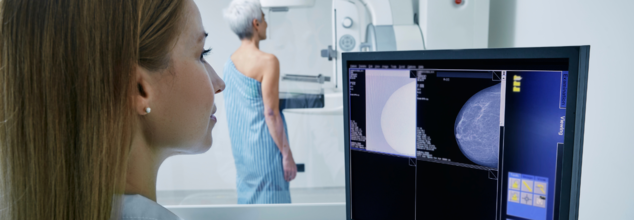
Credit: Canva
What Happens To Your Body When You Eat Raspberries
Sweet, tart, and vibrantly red, raspberries are more than just a delicious fruit—they're a nutritional powerhouse. Their soft, slightly fuzzy texture and naturally refreshing taste make them a great addition to smoothies, yoghurt bowls, oatmeal, and salads. But what makes raspberries truly stand out is their impressive health profile. Rich in fiber, antioxidants, and vitamin C, these berries offer multiple benefits for your heart, digestion, blood sugar, and immune system.
Gut Health and Regular Digestion
One standout feature of raspberries is their fibre content. Just one cup delivers 8 grams of fibre, nearly a third of the recommended daily intake for women. “This high fiber content promotes healthy digestion and regular bowel movements,” says Elizabeth Harris, a registered dietitian. Raspberries are especially rich in insoluble fiber, which adds bulk to stool and helps it move more easily through the digestive tract. This can reduce the risk of constipation and support overall gut health.
A Heart-Healthy Snack
Raspberries also support cardiovascular health. While their vitamin C and fibre content are well-known, they also offer potassium, a mineral that plays a key role in managing blood pressure. Research has shown that regular consumption of raspberries may improve cholesterol levels, especially in individuals with high cholesterol or metabolic syndrome. These effects are likely linked to the berry’s mix of fiber and polyphenols, plant compounds known for their antioxidant properties.
Balanced Blood Sugar Levels
For people with diabetes or prediabetes, raspberries are an ideal fruit. They’re low in sugar and high in fibre, which helps prevent spikes in blood glucose levels. According to the American Diabetes Association, berries are one of the healthiest carbohydrate sources. When paired with protein or healthy fats like Greek yogurt or nuts, raspberries become a satisfying, blood sugar-friendly snack.
Fighting Inflammation With Antioxidants
Raspberries contain powerful antioxidants, including anthocyanins and polyphenols, which help combat inflammation and oxidative stress in the body. “These compounds can lower the risk of chronic conditions like heart disease and cancer,” Harris explains. Their anti-inflammatory properties also make raspberries a key component of the MIND diet, which supports brain health and may slow cognitive decline.
Immunity Boost With Vitamin C
With over a third of your daily vitamin C needs in just one cup, raspberries can help keep your immune system strong. Vitamin C supports wound healing, protects cells from free radical damage, and strengthens your body’s defence against infections.
Tips for Storage And Enjoyment
To keep raspberries fresh, store them in an airtight container lined with paper towels and refrigerate. Wait to rinse until you’re ready to eat. For longer storage, freeze them in a single layer before transferring to a sealed bag.
Whether eaten plain, swirled into chia seed jam, blended into smoothies, or sprinkled on cereal, raspberries are a versatile and nutrient-rich fruit worth making a regular part of your diet.

Credits: Canva
Women Are More Comfortable With AI-Assisted Mammography
A recent study published in Radiology: Imaging Cancer, found that most women are comfortable with AI being used to support radiologists in interpreting mammograms. The study that surveyed women, found that 71% have said they are fine with AI playing a supporting role in the review process.
However, the trust in AI alone is still low. Fewer than 5% women said they would be comfortable with AI being the sole reviewer of their mammogram results. This also suggested that while women were looking forward to innovation, they still value human expertise, especially when it comes to something as sensitive as breast cancer, which could be life-altering.
What Is A Mammography?
It is a specialized medical imaging test that uses low-dose X-rays to detect any early signs of breast cancer, even before symptoms appear. It can also help identify tumors, calcifications, and other abnormalities in breast tissues. Mammograms are also a vital part of routine breast cancer screening, especially for women who are over the age of 40 or those with a family history of the disease.
During a mammogram, the breast is compressed between two plates to spread the tissue and obtain clear images. These images are then analyzed by the radiologists who then look for any suspicious signs that may indicate cancer.
How AI Plays A Role In Mammography?
With advances in technology, artificial intelligence (AI) is also being used to assist radiologists in reviewing mammogram results. AI algorithms are trained to identify patterns and flag any abnormalities. This also often spots subtle changes that could have been missed by the human eye.
In an AI-assisted mammography, the computer does not replace the radiologist, but acts as a second reader. It also offers another layer of review. This can also increase accuracy, reduce false positives or negatives, and streamline the screening process. Most importantly, AI can quickly process thousands of images, making it a valuable tool in busy healthcare setting.
How Was The Study Conducted?
The study surveyed 518 women at UT Southwestern Medical Center for seven months in 2023. The results showed that women with a higher education levels and more awareness of AI were twice as likely to accept AI in their screenings.
However, the study found that Black and Hispanic women were at a greater concern about data privacy and potential AI basis. These groups were also less likely to trust AI. They have highlighted the importance of addressing equity and transparency in AI development.
There have been previous cases where AI has been biased against African American descents. A Detroit resident Robert Williams was arrested right in front of his children and held in detention for a night after a false positive in an AI facial recognition system. He eventually found out that faulty AI had identified him as a suspect. Another Detroit resident, Michael Oliver, and in New Jersey, Nijeer Parks experienced the same, they both were victims of false positives in AI facial recognition systems.
These instances are the reason why women of color are also apprehensive about AI being used in their diagnosis, due to its perceived bias.
However, women with a family history of breast cancer showed a higher degree of trust when their results were normal, possibly due to relief and reassurance. But women who had previously experienced abnormal results were more cautious, especially when AI and radiologists offered conflicting assessments.
Dr. Basak Dogan, a co-author of the study and director of breast imaging research at UT Southwestern, emphasized the importance of gaining patient trust. “If patients are hesitant or skeptical about AI’s role in their care, this could impact screening adherence and, consequently, overall health care outcomes,” she said.
Patients need to feel confident not just in the technology but also in how it’s being used.

Credits: Canva
Stop Doing These 5 Things 'Consistently' After 50 To Add Over 10 Years To Your Life
Who among us isn’t seeking the secret to a longer, healthier life? From intermittent fasting to age-fighting supplements, health fads rise and fall. What if the answer to living more than a decade longer didn't depend on a magic bullet product, but the reduction of five major lifestyle threats? A new and pioneering global study, published in The New England Journal of Medicine and unveiled at the 2025 American College of Cardiology Scientific Session, found just that.
Led by German scientists and with more than two million participants in 39 nations, the long-term study followed people for almost half a century to find out how health at middle age, particularly at 50, determines how long people live and what they suffer from. Five key cardiovascular disease risk factors were the focus: high blood pressure, high cholesterol, obesity, diabetes, and smoking. Combined, these risk factors cut life expectancy in half.
“Our central question was how many additional years of life are possible if these factors are absent or modified in middle age,” said Dr. Christina Magnussen, deputy director of cardiology at the University Medical Center Hamburg-Eppendorf. Over 10 years of life can be added or lost depending on how these risk factors are managed around age 50.
How Five Risk Factors Add To Your Lifespan
The results were stark. People who made it to age 50 with none of the five risk factors had a much reduced lifetime risk for cardiovascular disease, 13% among women and 21% among men. However, for individuals with all five risk factors, the risk leapt to 24% in women and 38% in men. But even more terrifying, cardiovascular events took place 13 years before in women and 11 years before in men when all five risks were in place.
In mortality, the disparity was even more dramatic. Women with no risk factors had a 53% chance of dying by age 90. That rose to 88% for women with all five factors. Mortality in men went up from 68% to a whopping 94%. The net deficit? A loss of around 14.5 years of life for women and 12 years for men.
One of the most inspiring lessons from the study is that it's never too late to make a positive change. Even at about age 50, deliberate lifestyle changes can extend life significantly.
For example, managing high blood pressure between the ages of 55 and 60 postponed heart disease by a mean of 2.4 years among women and 1.2 years among men. Stopping smoking at that age gained women an extra 2.1 years of life and men an extra 2.4. When all five risk factors were changed, people gained five years of life — a health dividend much larger than most medical interventions.
Dr. Holger Thiele, president of the German Society of Cardiology, thinks that this study needs to be taken as an individual call to action. "The study indicates that even at approximately age 50, people can significantly alter their lifestyle or prevention measures to quite substantially affect their life expectancy," he said.
The five modifiable risk factors—obesity, high cholesterol, high blood pressure, smoking, and diabetes—combined are responsible for half of the world's burden of cardiovascular disease. By addressing these habits early, the possibility of a longer, healthier life becomes not only possible but likely.
Why Prevention Is the New Prescription?
This study upholds a paradigm shift in contemporary medicine: prevention is not merely superior to cure—it's stronger. In a treatment-driven healthcare system, such findings are a powerful reminder that the most impactful interventions are frequently at our disposal.
Disease prevention through healthy weight, smoking cessation, regular exercise, blood pressure and cholesterol monitoring, and blood sugar control are not cool, but they are evidence-based interventions with life-changing results.
5 Things to Do To Live Longer and Healthier
The science is certain, but changing takes work. Here's where to begin:
Get screened early: Knowing your numbers for blood pressure, cholesterol, and glucose by age 40 can help you get ahead of risk.
Quit smoking: Quit smoking through cessation programs or nicotine replacement products. Health rewards begin immediately.
Eat for your heart: Choose a Mediterranean-style diet with lots of vegetables, healthy fats, and lean protein to prevent cholesterol and weight gain.
Walk regularly: Even a 30-minute brisk walk every day can lower several risk factors.
Take care of your mental health: Stress and sleep disturbances can exacerbate cardiovascular risk factors. Get plenty of rest, practice mindfulness, and seek therapy when necessary.
This groundbreaking study highlights a fundamental truth, how we live during our 40s and 50s can decide the duration and quality of our golden years. Steer clear of or turn around just five prevalent health threats and you can add more than a decade to your life. That's a compelling reason to take your health seriously — not later, but now.
No pill or cool hack can provide the same amount of benefit. The science is straightforward, the effect is significant, and the moment to act is now because the true fountain of youth may actually lie in the day-to-day choices you make or refrain from making.

Credit: Canva
This Tree Revered In Hindu Texts Can Help Manage Arthritis
Prized for its soothing and calming fragrance, Parijat, fondly known as the Night Jasmine flower, is well known not only for its ornamental nature but also for its wide range of medicinal qualities. Right from treating and managing arthritis, cold and cough, fever, worms, indigestion, wounds, and diabetes, to malaria, the beautiful white bloom does it all. Parijat holds a strong place in Ayurvedic scriptures for the treatment of various diseased conditions since ancient times. According to the Indian mythological literature, Parijat is mentioned as a ‘tree from heaven’, and it is also mentioned in the Bhagwat Gita and Harivamsa Purana as the main flower that is used to worship Ma Durga. Let us know more about the curative qualities of the beautiful night jasmine flower.
Ayurvedic Benefits Of Parijat
Relieves Pain And Inflammation
Parijat intrinsically possesses potent analgesic and anti-inflammatory properties, which is pivotal in reducing joint and muscle pain, thereby reducing the chances of chronic autoimmune inflammatory diseases like rheumatoid arthritis which occurs due to the vitiation of Vata Doshas. Being a natural vasodilator, it is also used to treat painful muscle spasms, sore muscles, sciatica etc.
Grind 6 to 7 leaves of Night Jasmine and mix with water, and boil it till the quantity is reduced to half. Now, cool it and drink this concoction on an empty stomach in the morning to reduce joint pain.
Combats Respiratory Issues
Sanctified with powerful anti-inflammatory, anti-biotic, and anti-asthmatic properties, Parijat offers a one-stop traditional remedy for all sorts of respiratory distress. It is vital in treating the common cold, sore throat, cough and flu symptoms. When taken alongside honey and warm water on an empty stomach, it actively thins and loosens sputum particles within the lungs, chest and nasal cavities and eases breathing. It is also highly beneficial for providing faster relief from non-productive cough, asthma and other bronchial conditions.
Heals Wounds and Infections
Parijat portrays strong anti-bacterial, anti-viral and antifungal properties that are not only used for removing bacteria and germs from the body but also treats wounds and improves healing. The bioactive compounds present in this perfumed bloom has been used since the ancient times to treat various skin issues like sores, ulcers, skin fungus, etc.
Treats Malaria
Malaria is a mosquito-borne disease that chiefly occurs due to the malarial parasite Plasmodium characterizing symptoms like high fever, muscular pain, vomiting, convulsions etc. The potent anti-parasitic action of the parijat leaves restricts the growth of the malarial parasite right at the ring stage and hence prevents aggravation of the infection.
Promotes Digestion
Parijat is a traditional remedy for improving gut health and treating a wide range of gastrointestinal disorders like diarrhoea, flatulence, peptic ulcer, esophagitis, heartburn, gastroesophageal reflux disease, indigestion, and stomach pain. The carminative nature of the flower and the leaves helps in breaking down the food particles in the stomach and intestine, enhances the secretion of the digestive juices and thereby increases the absorption of essential nutrients through the intestines. It helps to eliminate abdominal gas and in turn reduces abdominal distension, bloating and gaseous cramps. Being a potent laxative, it also helps in free passage of stools thus treating constipation.
Regulates Diabetes
Diabetes is known as Madhumeha in Ayurveda and owing to the presence of numerous beneficial herbs, Parijat is an excellent herb for managing high sugar levels by improving the metabolism due to its Tikta (bitter) and Kashaya (astringent) properties and Kapha-Pitta balancing doshas. The excellent anti-glycemic nature of the herb plays a quintessential role in alleviating the blood sugar levels of the body. Intake of this herb activates the pancreas and stimulates the secretion of a balanced amount of Insulin and also regulates the metabolism of carbohydrates. This action readily helps the extra glucose circulating in the blood to get converted into glycogen which in turn prevents sudden spikes in the blood sugar level. It readily helps diabetic patients to maintain the control over the blood glucose levels in the blood naturally.
Manages Blood Pressure
Parijat acts as a natural antihypertensive agent which normalizes the blood pressure levels and keeps it under check. It is extremely pivotal in both hypertension and hypotension conditions. By improving the heart functions, it enhances cardiovascular endurance which brings the blood pressure to a stable level and maintains balanced readings.
Treats Piles
Piles or Haemorrhoids are enlarged blood vessels that one can get inside or around your anus (the opening of your bottom). Because of the sedentary lifestyle in today’s times, this painful condition has become one of the most common issues developed due to chronic constipation. When Vata dosha becomes imbalanced in the body, constipation is created. These conditions often lead to Piles or mass formation near or inside the opening of the anus when ignored or untreated. Parijat extensively helps to manage constipation effectively, thus preventing the formation of piles.
Augments Skin
The host of anti-bacterial properties of the Parijat leaf extract plays a crucial role in treating skin infections like acne, warts, boils, eczema, blisters, itching etc. Not only does it improve complexion by evening out the skin tone, but also clear blocked pores, and reduces various signs of ageing like wrinkles, fine lines, spots, pigmentation etc. Owing to the antiseptic nature, the oil obtained from its flowers also prevent wounds and injuries and speeds up the healing process.
Remedies Hair Troubles
The wealth of antioxidant, astringent and antimicrobial properties in Parijat flower extract makes it extremely beneficial for all sorts of hair woes. Sanctified with essential bioactive constituents, parijat not only enhances blood circulation in the hair follicles but also prevents various hair infections and actively takes part in collagen formation. It is extremely useful for treating dandruff, revitalising dull, lifeless hair. Regular use of the oil obtained from its flowers improve hair texture, adds shine and stimulates hair growth. By effectively alleviating stress, it also prevents hair fall and premature greying of hair.
© 2024 Bennett, Coleman & Company Limited

